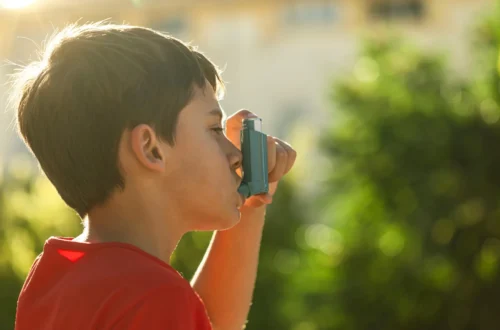Introduction
In the United States, one in five of the 37 million adults diagnosed with diabetes remains unaware of their condition. Traditional methods for diagnosing diabetes and prediabetes often necessitate a visit to a healthcare provider or laboratory, which can be both costly and time-consuming. Recent advancements suggest that diagnosing diabetes and prediabetes could become significantly more accessible, potentially utilizing a simple breath test.
Breakthrough Breath Sensor Technology
A research team led by Huanyu “Larry” Cheng, the James L. Henderson, Jr. Memorial Associate Professor of Engineering Science and Mechanics at Penn State, has developed an innovative sensor capable of diagnosing diabetes and prediabetes within minutes using only a breath sample. The findings from this research were published in the *Chemical Engineering Journal*.
Mechanism of Detection
Historically, diagnostic methods focused on measuring glucose levels in blood or sweat. In contrast, this novel sensor measures acetone levels in exhaled breath. While acetone is a common byproduct produced by fat metabolism, elevated levels—specifically above 1.8 parts per million—can indicate the presence of diabetes.
Cheng noted, “Although existing sensors can detect glucose in sweat, they typically necessitate inducing perspiration through methods such as exercise, chemical stimulation, or a sauna, which may not be practical for everyone. This new sensor simplifies the process; it merely requires a breath sample to be exhaled into a bag, followed by the insertion of the sensor for a few minutes to obtain results.”
Innovative Design and Materials
The sensor distinguishes itself not only through its biomarker detection of acetone but also through its use of advanced materials, notably laser-induced graphene. This material is derived by employing a CO2 laser to convert carbon-based materials, such as polyimide film, into porous graphene structures that possess enhanced sensing capabilities.
Cheng likened this process to “toasting bread to carbon black if toasted for too long.” By finely adjusting parameters such as laser power and speed, researchers can produce a few-layered, porous graphene form optimized for gas capture.
Improving Selectivity
The inherent porosity of laser-induced graphene facilitates the passage of gases, increasing the likelihood of capturing acetone molecules amid the high moisture content of breath. However, initial trials indicated that the graphene alone was not adequately selective for acetone compared to other gases; therefore, it was combined with zinc oxide.
“A junction formed between these two materials enhances the selective detection of acetone relative to other molecules,” Cheng explained.
Addressing Moisture Interference
Another challenge addressed by the researchers involved the sensor’s susceptibility to absorbing water molecules, which could compete with acetone for detection due to the humid nature of exhaled breath. To mitigate this, the team introduced a selective membrane, serving as a moisture barrier, that permits acetone to pass through while blocking water molecules.
Future Directions and Health Applications
Currently, the method necessitates that users breathe directly into a bag to minimize external interference, such as ambient airflow. Future iterations of the sensor aim to allow for direct attachment under the nose or inside a mask to facilitate real-time monitoring of acetone in the condensation of exhaled breath. Additionally, Cheng plans to explore how variations in acetone levels correlate with dietary and exercise habits—similar to glucose fluctuations—thereby potentially extending the sensor’s application beyond diabetes diagnosis.
Cheng remarked, “Understanding how acetone levels in breath fluctuate with lifestyle choices presents exciting opportunities for utilizing this technology in broader health initiatives.”
Funding and Collaboration
This research received funding from the U.S. National Institutes of Health and the U.S. National Science Foundation, which supported Penn State’s contributions. Li Yang, a visiting scholar in the Penn State Department of Engineering Science and Mechanics at the time, is the first author of the study. A complete list of funding sources and authors is available in the published paper.
Key Health Takeaway
The development of a breath-based sensor for diagnosing diabetes and prediabetes represents a significant advancement in medical technology, promising a rapid, cost-effective, and convenient method for detection that may enhance early diagnosis and health management.





